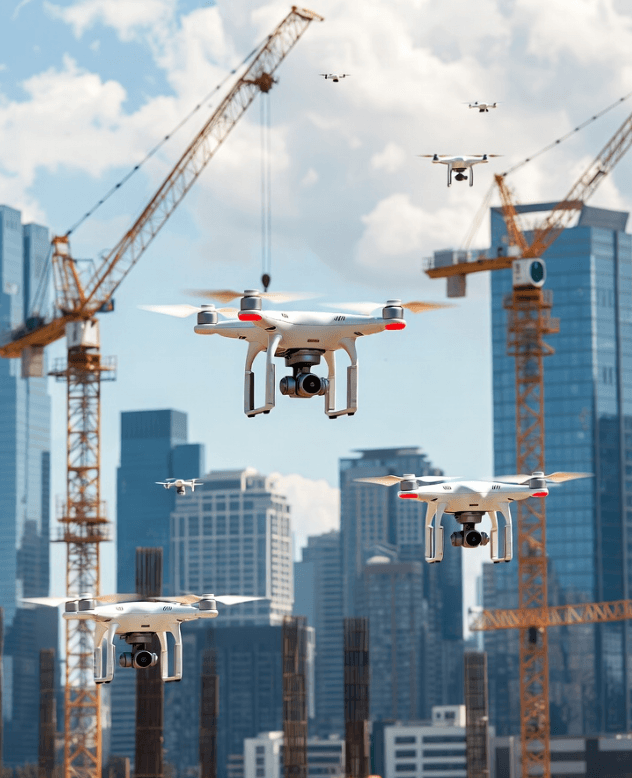Urban Low-Altitude Expansion and the Growing Importance of Flight Safety Levels
As the low-altitude economy transitions from early demonstrations to commercial services embedded in dense metropolitan areas, unmanned aircraft systems are increasingly required to carry out missions in environments characterized by tall buildings, narrow corridors, unpredictable obstacles, and continuous human activity. Under such conditions, perception systems based primarily on optical cameras have begun to reveal limitations, particularly when lighting deteriorates or visibility decreases, prompting regulators and industry alike to reconsider how safety levels for urban flight should be defined, evaluated, and authorized, because commercial deployment ultimately relies on stable performance under real-world operational risks rather than controlled testing scenarios.
Environmental Complexity and the Challenges of Improving Urban Flight Safety
Obstacles and Dynamic Structures Increase Environmental Uncertainty
Urban airspace contains a wide range of structural elements, including irregular shapes, reflective surfaces, and frequent occlusions. Such environments complicate scene interpretation for vision-based systems, increasing the likelihood of incorrect perception and thus increasing collision-avoidance pressure during critical decision moments.
Visual degradation caused by light and weather.
Visibility in cities varies dramatically between day and night and is frequently hampered by fog, haze, rain, strong backlighting, and other environmental disturbances. When image quality deteriorates, the reliability of visual sensing can fail precisely when the flight-control system requires accurate environmental awareness, resulting in rapidly escalating risks that jeopardize operational continuity.
Millimeter-wave radar as a foundation for higher levels of flight safety.
Stable and quantitative measurements for critical decision-making
Millimeter-wave radar actively transmits electromagnetic signals and receives reflections to provide stable perception data such as obstacle distance, velocity, and angle regardless of lighting or weather conditions. This capability promotes flight safety by ensuring that unmanned aircraft systems have access to reliable information even when cameras suffer significant performance degradation.
Enabling certification requirements for redundant safety architectures.
As global regulatory attention turns to advanced urban flight scenarios such as operations over people or nighttime logistics, a redundant perception architecture capable of quantitative safety proof becomes increasingly important. Integrating millimeter-wave radar into multi-sensor fusion frameworks improves reliability, helps operators comply with safety classifications, and allows them to unlock higher-value flight paths.
More information about radar-enabled low-altitude safety solutions is available at:
https://linpowave.com/products
Commercial Value Driven by Advancing Flight Safety Levels
Higher safety levels are directly related to the ability to access mission-critical airspace and maintain continuous operation. When perception systems are unable to cope with poor visibility, operators face reduced flight windows, increased insurance costs, and missed revenue opportunities. Consequently, incorporating millimeter-wave radar should be seen as an essential investment that improves operational scalability and permits long-term commercial growth rather than just as an extra hardware expense.
Conclusion: Radar-Supported Reliability as the Baseline for Urban Air Mobility
Flight safety must move from experimental demonstrations to verifiable capabilities as low-altitude operations develop into reliable public services. Because of its reliable sensing capabilities and measurable safety contribution, millimeter-wave radar is emerging as a key element that facilitates the entry of unmanned aircraft into intricate urban environments and permits long-term commercial viability in low-altitude urban ecosystems.
FAQ: Millimeter-Wave Radar and Safety Levels for Urban Flight
How do urban flight safety standards get established?
They are characterized by the perception system's capacity to sustain dependable awareness in complicated and deteriorated circumstances, necessitating quantifiable validation of risk control as opposed to merely situational or visual assumptions.
Why is advanced safety levels thought to require millimeter-wave radar?
Because it consistently provides quantifiable and extremely trustworthy sensing data, even in situations where vision is interfered with, it facilitates improved decision-making in high-risk situations.
Does radar take the place of perception based on cameras?
No, radar complements visual systems by bridging perception gaps brought on by poor lighting or weather, creating a fusion architecture that is becoming more widely acknowledged as a requirement for high-level flight authorization.
Will operational costs rise dramatically as a result of radar integration?
Since increased safety levels allow access to higher-value missions and lower exposure to operational and insurance risks, the long-term economic benefit usually outweighs the initial integration costs.



